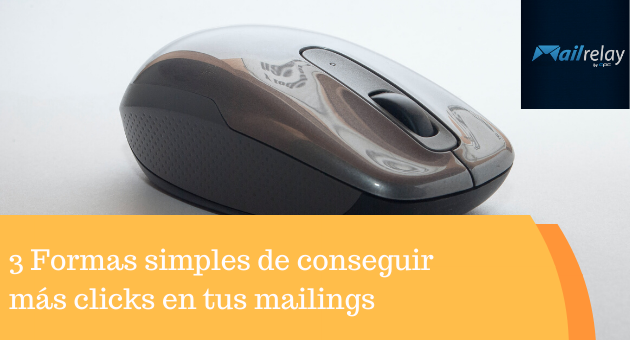
More clicks on the links in your email marketing campaigns means more sales possibilities, right? Of course, if contacts don’t go to your website or store, they probably won’t buy from you.
How, then, can we get more clicks on our links or calls to action?
Well, for this little problem, there are some very simple tricks that you can apply very easily.
If you use them correctly, you will have a lot more clicks.
Let’s see them, starting with the most classic idea.
Let’s get started:

That is the simplest thing we can do; it requires almost no intervention on your part.
Just use the segmentation tool included in Mailrelay, and create a segment with the contacts who received the newsletter but didn’t open it.
You can send the same newsletter to that contact segment that didn’t open the first email, perhaps varying the subject line, or, if you have time, the content.
That will increase the number of openers, which consequently will increase your clickthrough rate.
If you have a product or service to sell, this is an easy way to get more leads.
Don’t discard that option:
Of course, if the link you are sharing is relevant for your marketing strategy, for example, a promotion you are doing, you will want to give it as much dissemination as possible.
If, for example, you are sending a post on your blog, you can add the link as a reminder and get some extra clicks that way.
Now let’s look at another strategy that gave me some good results when I used it.


In that case, if we had left only one of the links, up or down, whatever, the clicks would have been lost.
The strategy we followed, in this case, was to put the first link at the beginning, which is already clicked by people who usually read the posts; that is, they don’t need to be very convinced, as they are regular readers.
In this case, the link at the top works well.
For subscribers who are not sure, the rest of the text will convince them to click, with an explanation of the content of the text, and a small incentive through a funny (or not funny, story that I like)
At the end of the message, I added the same link, but in another position.
Another similar strategy that also works very well is to run a pseudo-A/B test:

3.- Use two versions of the same link

In this case, the two links are in the same location, one below the other, so that the contact sees them at about the same time.
What changes is the “sales text” and in a very tangible way.
The destination is the same, and the subscriber knows this, it is not hidden, but one of the links draws much more attention due to the needs or tastes of the subscribers.
This way of including calls to action will not only provide you with more clicks, but it will also allow you to get to know your contacts better and know what they need.
Very interesting, isn’t it?

► Some extra tips and ideas
If you follow the points mentioned above, you are sure to have more clicks.
I have managed to learn this over the years, after trying hard.
But if it’s still not enough, or if you want to try more things, here are some suggestions you can try. Although in this case, these tips are not valid in 100% of cases, and you will have to test:
In my case, I saw no difference in using text link emails or buttons with a more “impressive” graphic design. So far, if there were any differences, it was because of the strategies I talked about and the texts used.
Calls to action and links must be clearly visible. If you think that for some reason, a graphic button would be more visible, try it out.
Since the buttons generally cant have as much text, or they no longer look like buttons, you can add an impressive phrase below:

In any case, the button is not always essential.
2) Run A/B tests with different subject lines
Although it may not seem like it, there is a relationship between the subject of the newsletter and the clickthrough rate.
The explanation may be that depending on the subject line, the contact will be more or less predisposed to open the email or click to visit the website.
Whatever the real reason, you can create an A/B test in just a few minutes; you can see the explanatory article here.
3) If you notice that the results stagnate or gradually deteriorate over time, run more tests
Over time, if the content you send is more or less the same; for example, if you use a link or call to action like “click here” or “read more,” your audience could get used to it.
And so they could start ignoring your links.
If this happens and you notice that the results are gradually getting worse, with fewer clicks, try to change something, like the points we discussed.
Try these tricks
It will only take a few more minutes when you are preparing your newsletters.
If you spend just a few more minutes, you’ll get more clicks on your email marketing campaigns.
If you detect sales opportunities in these clicks, the effort employed will be much better appreciated.
I hope this post was helpful.
